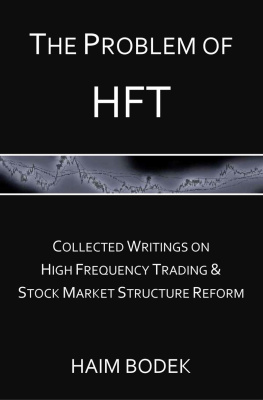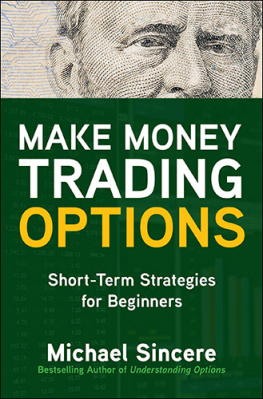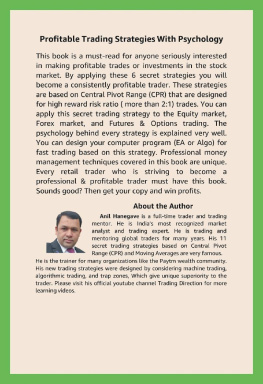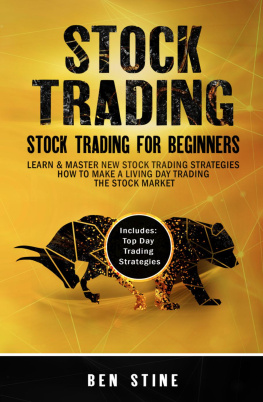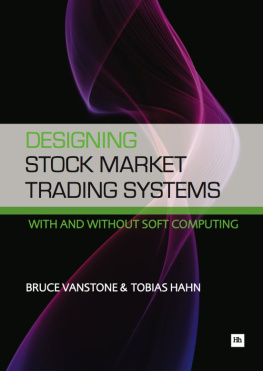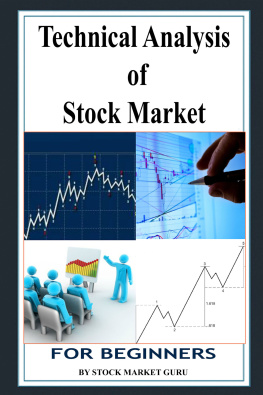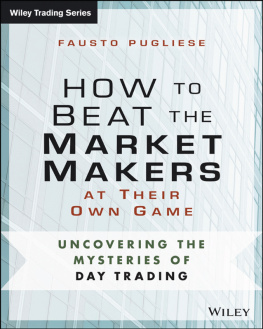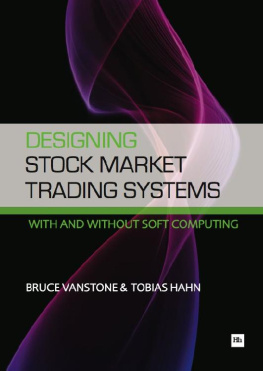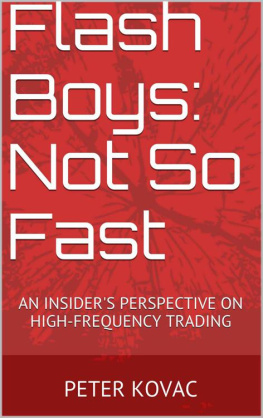The Problem of HFT
Collected Writings on
High Frequency Trading
& Stock Market Structure Reform
Haim Bodek
Decimus Capital Markets, LLC
www.haimbodek.com
Copyright 2012 by Decimus Capital Markets . All rights reserved, including the right of reproduction in whole or in part in any form.
E-published in the United States. January 2013.
Published in the United States. January 2013.
ISBN-13: 978-1481978354
ISBN-10: 1481978357
For information contact:
Haim Bodek Managing Principal
Decimus Capital Markets, LLC / Haim Bodek Consulting SM
203-286-4470
haim@haimbodek.com
http://haimbodek.com
IMPORTANT INFORMATION
This document is intended to be general information and does not provide investment advice in any capacity. The information in this document reflects DCMs views as well as prevailing conditions as of the date of publication. The information in the document is subject to change without notice and DCM assumes no duty to update the information. DCMs opinions, interpretations, and estimates (with regard technological, financial, regulatory and other areas of domain expertise, and including but not limited to information based upon or provided by third parties ) constitute DCMs judgment and should be regarded as indicative, preliminary and for illustrative purposes only. In preparing this document, DCM has relied upon and assumed, without independent verification, the accuracy and completeness of certain information available from public sources or which was provided to DCM by third parties. In addition, DCMs analyses are not and do not purport to be appraisals or forward looking statements with regard to any of the assets, securities, or businesses of any other entity.
Nothing in this document should be construed as regulatory, valuation, legal, tax, accounting or investment advice and it does not constitute a recommendation, solicitation, offer or commitment to purchase, sell or underwrite any securities to you, from you, or on your behalf, or to extend any credit or provide any insurance to you or to enter into any transaction. Unless otherwise agreed in writing, DCM is not acting as your financial adviser or fiduciary. Before you enter into any transaction you should ensure that you fully understand the potential risks and rewards of that transaction and you should consult with such advisers, as you deem necessary to assist you in making these determinations including but not limited to your accountants, investment advisors, legal and/or tax experts.
DCM SHALL NOT BE LIABLE FOR ANY DIRECT, INDIRECT, INCIDENTAL, SPECIAL, CONSEQUENTIAL OR EXEMPLARY DAMAGES, INCLUDING BUT NOT LIMITED TO, DAMAGES FOR LOSS OF PROFITS, INCURRED BY YOU OR ANY THIRD PARTY THAT MAY ARISE FROM ANY RELIANCE ON THIS DOCUMENT OR FOR THE RELIABILITY, ACCURACY, OR COMPLETENESS THEREOF.
Table of Contents
SECURITIES EXCHANGE ACT OF 1934
Sec 6 b(5) (5): The rules of the exchange are designed to prevent fraudulent and manipulative acts and practices, to promote just and equitable principles of trade, to foster cooperation and coordination with persons engaged in regulating, clearing, settling, processing information with respect to, and facilitating transactions in securities, to remove impediments to and perfect the mechanism of a free and open market and a national market system, and, in general, to protect investors and the public interest; and are not designed to permit unfair discrimination between customers, issuers, brokers, or dealers, or to regulate by virtue of any authority conferred by this title matters not related to the purposes of this title or the administration of the exchange.
I. The Problem of HFT
Haim Bodek
Decimus Capital Markets, LLC / Haim Bodek Consulting SM
January 2013
What is the Problem of HFT?
Prior to 2009 I believed that modern high frequency trading (HFT) was simply another name for automated or electronic market making (AMM or EMM) , the predominant form of algorithmic liquidity providing activity present in US equity markets over the period from 2000-2007. Like most outsiders to HFT, I hadnt yet fully grasped the significance of the bifurcation of automated strategies in cash equities markets. The split had resulted in the ascendancy of a new breed of high frequency turnover scalping strategy. These inventory-neutral strategies, which focused on capturing exchange rebates on electronic exchanges running the maker-taker market model, eventually evolved into what we now know as modern HFT.
As it turns out, t he practices of these new market makers were indeed very new, radically different from the AMM/EMM tradition. Where traditional AMM/EMM desks focused on competing for order flow and typically scaled through risk capacity in conjunction with superior quantitative pricing and risk management methods, HFTs leveraged technology and market microstructure to achieve an edge over the market. HFTs were also markedly different when it came to how they handled risk, scaling up volumes using frequency while keeping risk exposures within highly constrained inventory limits. Unlike automated market makers, HFTs werent focused on acquiring exclusive order flow arrangements. Instead, they focused on asserting influence over the market structure itself to accommodate the requirements of specific HFT strategies. HFTs were masters of leveraging the plumbing of electronic exchanges to get an edge. With automation, the US equities market had evolved into a vast complex machine, one that was purposefully well-tuned to the nuances of HFT scalping strategies.
Modern HFT wasnt a paradigm shift because its innovations brought new efficiencies into the marketplace. HFT was a paradigm shift because its innovations proved that anti-competitive barriers to entry could be erected in the market structure itself to preference one class of market participant above all others. In practice, these barriers trumped other advantages such as captive order flow arrangements. The HFT business strategy was to work with exchange partners to align the features of the exchange with the features of the algorithmic strategies themselves. The primary goal of achieving superior queue position in the order book was the most coveted, but certainly not the only advantage sought. And, given the volume potential of these strategies and the competitive pressure that the exchange industry faced, a number of for-profit electronic exchanges determined that it was in their interest to help HFTs achieve the requisite market microstructure changes that would assist HFT strategies in getting an edge over the electronic crowd.
Indeed, HFTs became the dominant form of trading in the US equities markets through the assistance of the electronic exchanges themselves. In pursuit of mutual gain, the exchanges provided HFTs unfair and discriminatory advantages over public customers through a number of innovations released in US equities market over the last five years. The real paradigm shif t that HFTs brought to US equities markets was, therefore, the construction of trading environments tailored for specific trading strategies.
It became about meeting the needs of that specific HFT community, says a technologist who worked for several top ECNs and exchanges in the 2000s. Its all about what functionality I can offer the HFT that they can take advantage of. We are going after guaranteed economics.
The close relationship between HFTs and electronic exchanges evolved over the past decade without sufficient regulatory oversight. It shouldnt be surprising that a dynamic evolved where HFTs rewarded exchanges that provided such guaranteed economics with their orders. HFTs were opportunistic traders and they demanded an edge to trade. If they didnt find a compelling enough edge at a particular exchange venue, they would trade somewhere else or stay out of the market altogether. The proliferation of market centers in the US equities marketplace provided the HFTs with many choices of venue, so they naturally directed their volume to exchanges that accommodated their needs.

